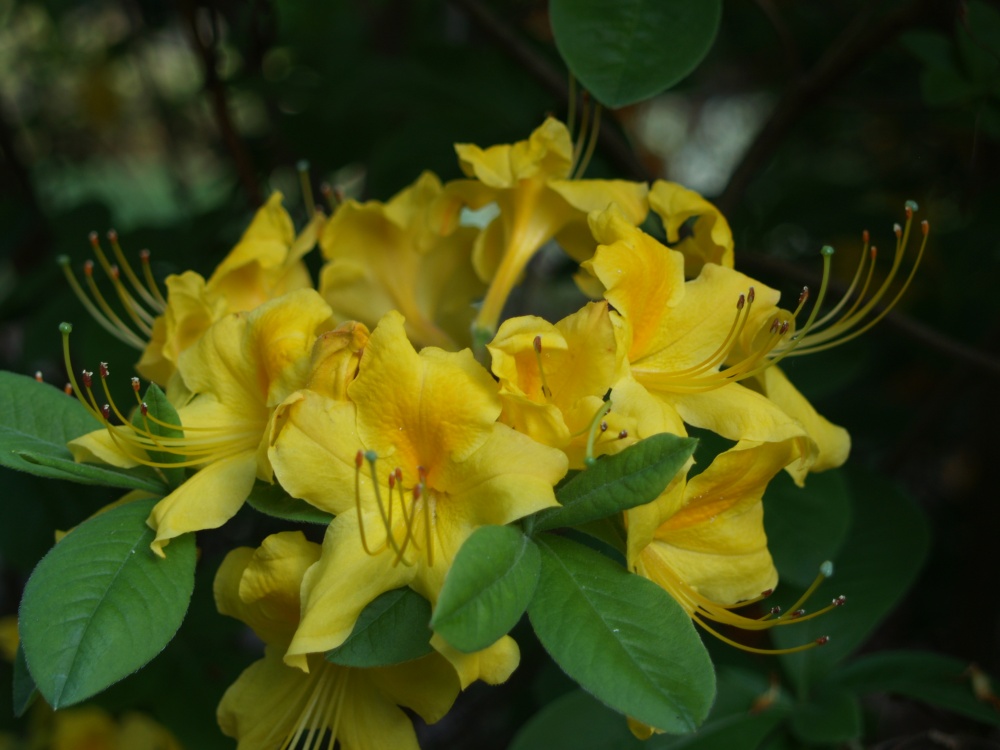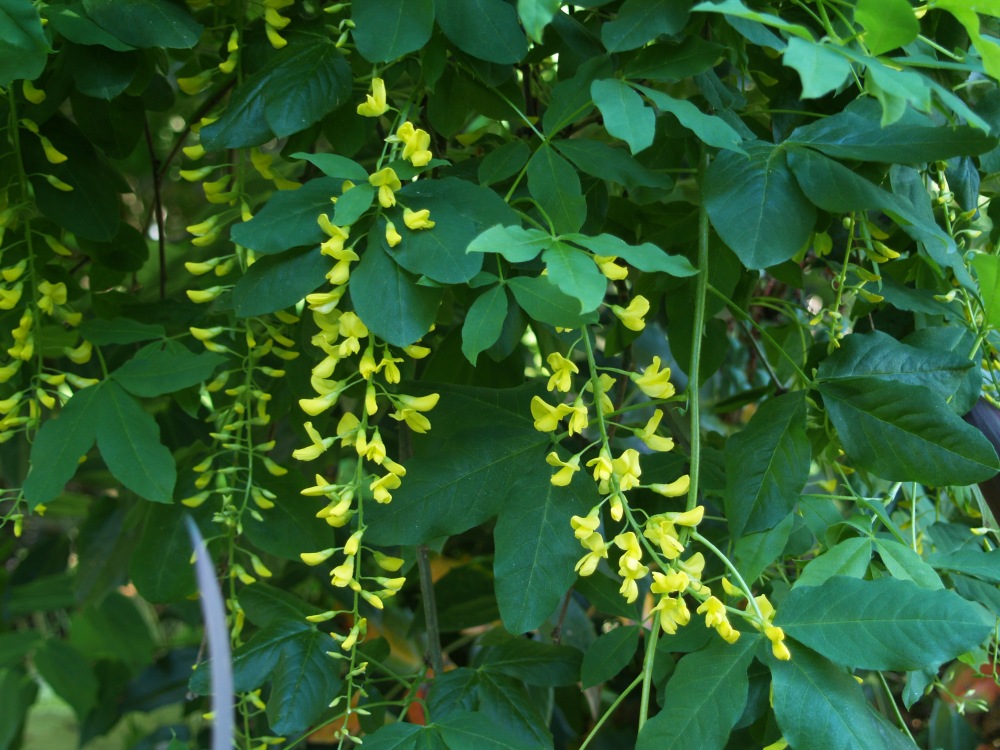For four weeks the garden has been superb. After a late start to spring that left at least this gardener muttering aloud, redbuds, dogwoods, and magnolias that typically flower earlier in March all flowered at once. Since, while one flower or another has been a bit tardy, there have been sufficient blooms to allow me to forget troubles caused by the winter’s cold. Today, as bright yellow, red, and orange Exbury azaleas (below) fade, the garden becomes more green, but still, abundant blooms remain.
The Bigleaf magnolia (Magnolia macarophylla, below) is aptly named with leaves measuring two feet long from tip to tip. Its twelve inch, slightly lemon scented flowers are by far the largest in the garden, and by good fortune there remain a few branches that hang down to eye level on this splendid tree. With its large size and coarse texture, this magnolia is not appropriate for most gardens, and in any case the curious purchaser is likely to have a difficult time finding one for sale.
While the native dogwoods are past bloom by a few weeks, hybrids are flowering and Chinese dogwoods (Cornus kousa) are nearly at their peak. The hybrid ‘Stellar Pink’ (below) is only barely pink, but after flowering weakly when young, in recent years it is covered in blooms. ‘Stellar Pink’ and other hybrids grow more vigorously and more upright in form than the wide spreading native, and hybrids are not bothered by mildews and leaf spotting that disfigure the native. I do not plant the hybrids instead of the native, but to extend flowering from mid April into early June.
The hybrid dogwood ‘Venus’ (below) has such large flowers that young trees appear overwhelmed, but the tree grows quickly and on a twelve foot tree the blooms are perfectly in scale. I’ve planted two, and one in shade has barely budged in several years while the dogwood in part sun flourishes. I suspect that this preference is not far different from the native’s, and while both are considered to be understory trees, they require the partial sun of the forest’s edge to grow and flower vigorously.
Two weeping Golden Chain trees (Laburnum x watereri ‘Pendula’, below) did not flower a year ago, and whether this was due to the severe winter or their general discontent with the Virginia climate, I’m unsure. Golden Chain is happiest with less heat and humidity, but with a bit of shade a few flowers can be coaxed. Today, there are enough flowers to satisfy the gardener that he is not unduly torturing this tree, and that it could possibly stay around for a while. 
Love your website, Dave. Its a great way to start my day! Question: What is the Yellow Exbury Azalea you have pictured here? Deciduous Azaleas are getting harder and harder to find in the NW (we are in Seattle) in spite of all the growers around. Need to have a name so I can order one ahead of time I guess. Thanks. If you are a Vet, thank you for your service to our country!
I believe that the cultivar is ‘Klondyke’, one of the most common. I agree that Exbury azaleas are getting harder to find. On the east coast we’re seeing more of the native azaleas available, but these are not as showy as the Exbury azaleas. I suspect they are also not as fragrant. Though my sense of smell is poor, at best, the garden was highly perfumed for a few weeks while the azaleas were flowering.